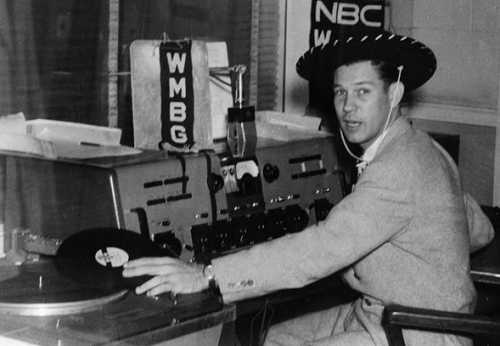
Ben Taylor, WMBG, Richmond, Virginia
RCA 76-Series Studio Consolettes
RCA's first effort in the 76 series was the 76-A, released in 1937 as part of an industry-wide trend away from rack-mounted systems. RCA was actually late to the game in producing their first all-in-one integrated console. Western Electric came out with the 23-A in early 1936 and Collins marketed their 12-H (and other models) later that same year. These consoles were marketed primarily to small and medium sized stations. They certainly weren't portable but their relatively small footprints offered flexibility that just wasn't available with the rack systems. They were also easier to operate and maintain. Perhaps most importantly, they cost less than rack-based installations--no small matter to many stations operating with bare-bones budgets.
The RCA 76-A looks a lot different from the later 76 series (see illustration below) but it was pretty similar functionally. I haven't seen any of these or even any recent pictures. I don't know if any have survived.
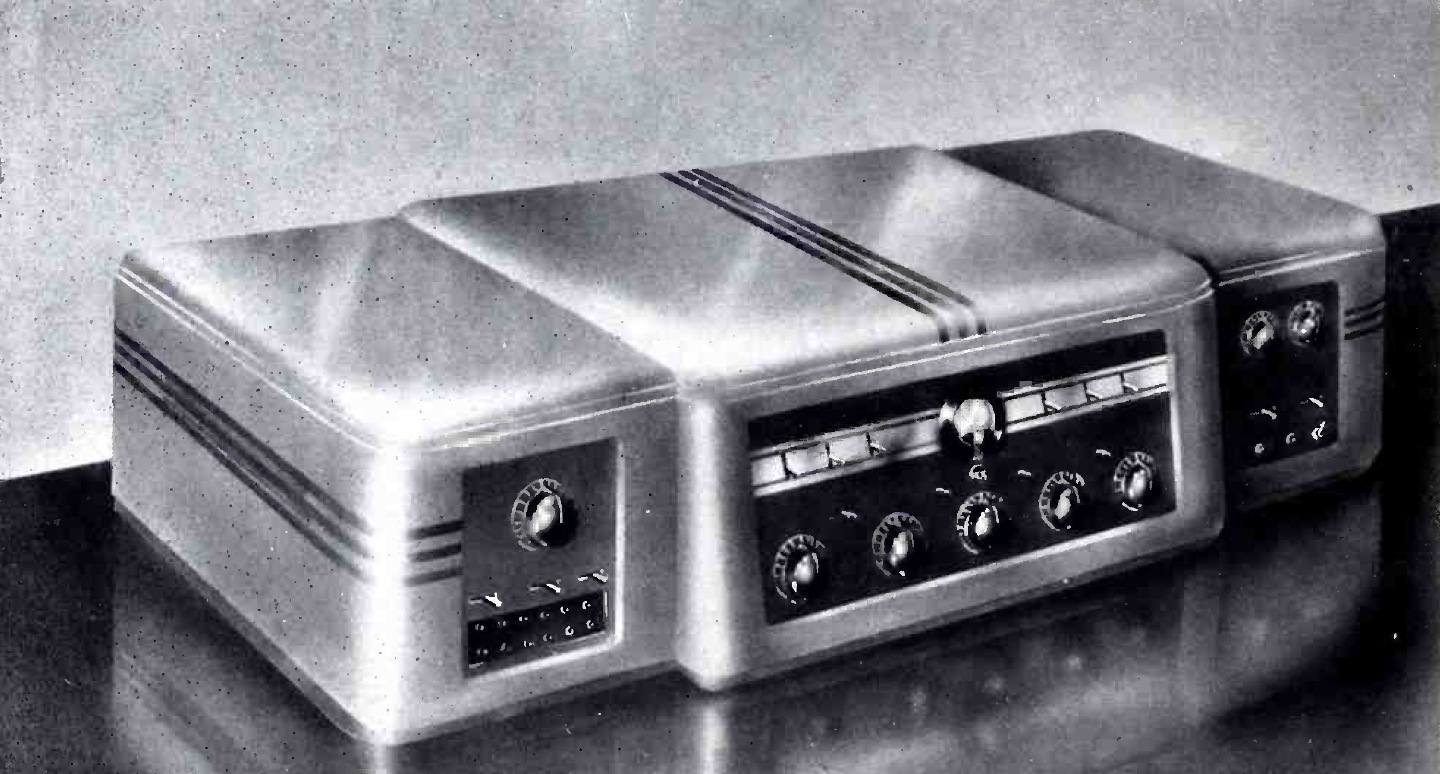
RCA 76-A Studio Consolette
In 1938, RCA produced the first of the 76-B series, incorporating an entirely new design concept that was carried through their entire line of broadcast equipment. The illustration below shows a 76-B taken from a December 1938 ad. Note the lack of handles at either end of the faceplate. In early 1940, the 76-B1 hit the market, now with the familiar handles. I just discovered a blog by someone restoring a 76-B1 That was built in 1947, complete with postwar handles (see below). I had previously believed the B1 ceased production when the B2 Came out. This was clearly not the case. The 76-B series continued in production through the 76-B5, introduced in 1950. The 76-B2 picture gives a look under the hood.
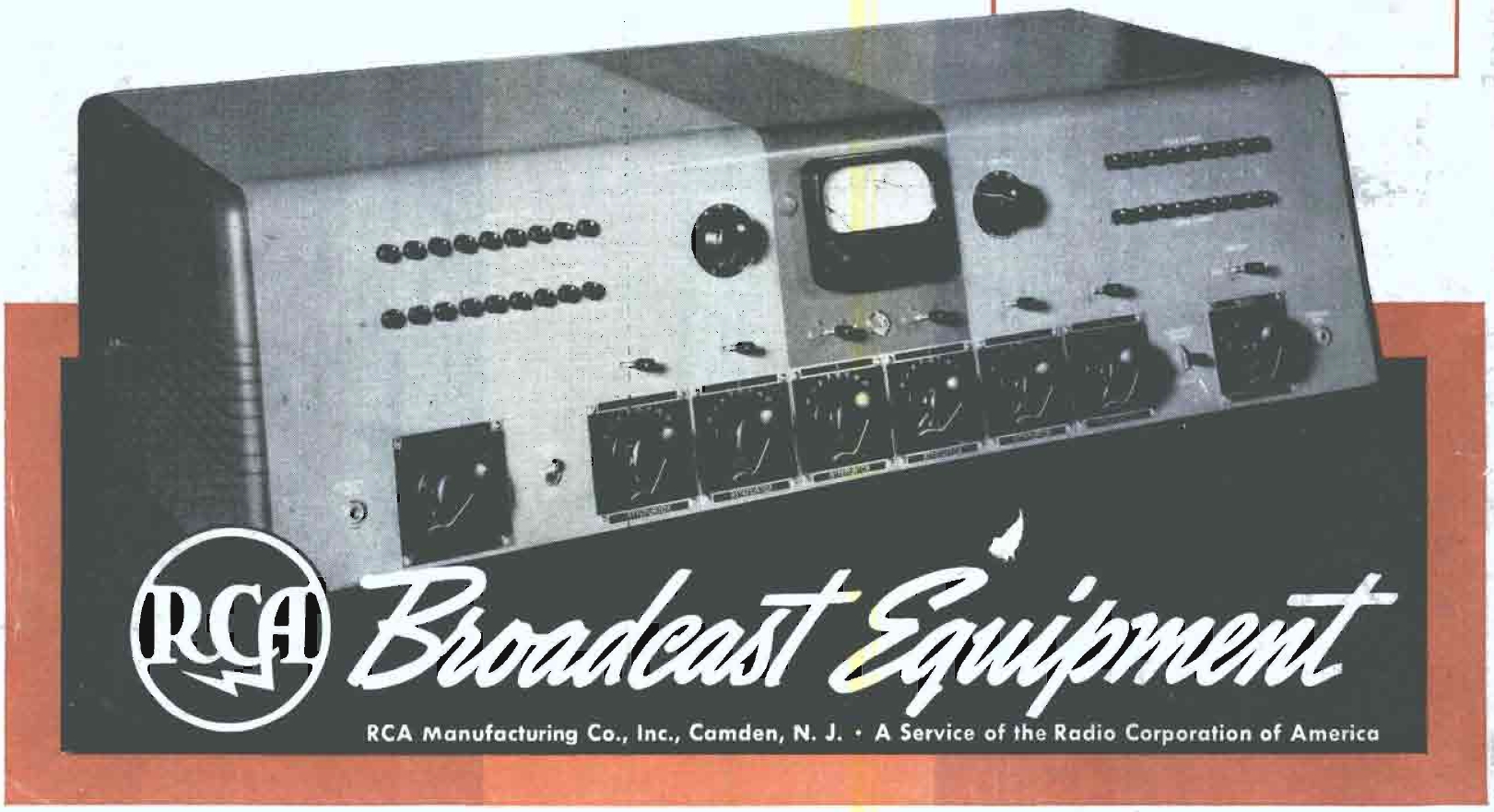
RCA 76-B Studio Consolette
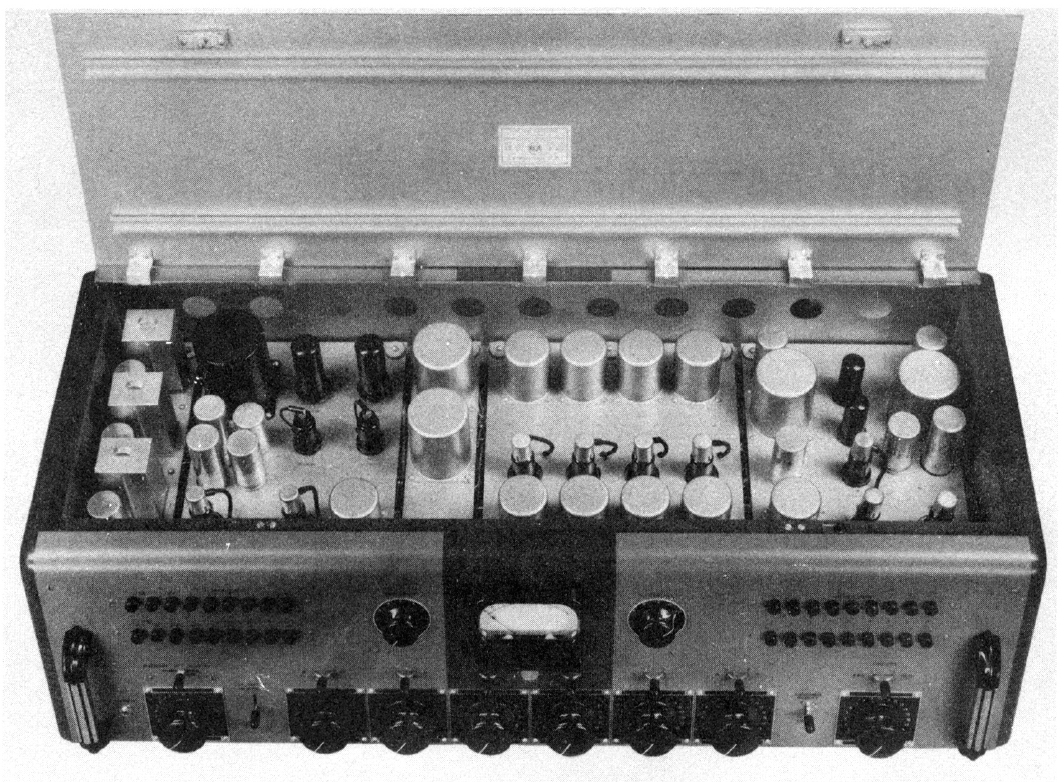
RCA 76-B2 Studio Consolette
Within a couple of years after the war, the 76-C came along. Externally, it looked virtually identical to the B series. But as soon as you look under the hood, the big difference is apparent. The 76-C adds two additional pre-amps for a total of six. You can see this easily in the illustration. This increased the flexibility of the board and allowed for turntables to connect without additional outboard pre-amps. Also, if you look closely at banks of pushbuttons, some of the nomenclature has changed to account for the increased flexibility offered by the additional pre-amps. Until recently, I thought the 76-C was the only "C" series produced. However, I came across a reference to a 76-C4 a while back but i've been unable find it again. One other point: If you compare the two "hood up" pictures, you will see the change in the style of handles RCA used pre-war and post-war. I've seen pictures of 76-B4s (and even a B1) with both styles of handles. The reason is that production of that model straddled the war.
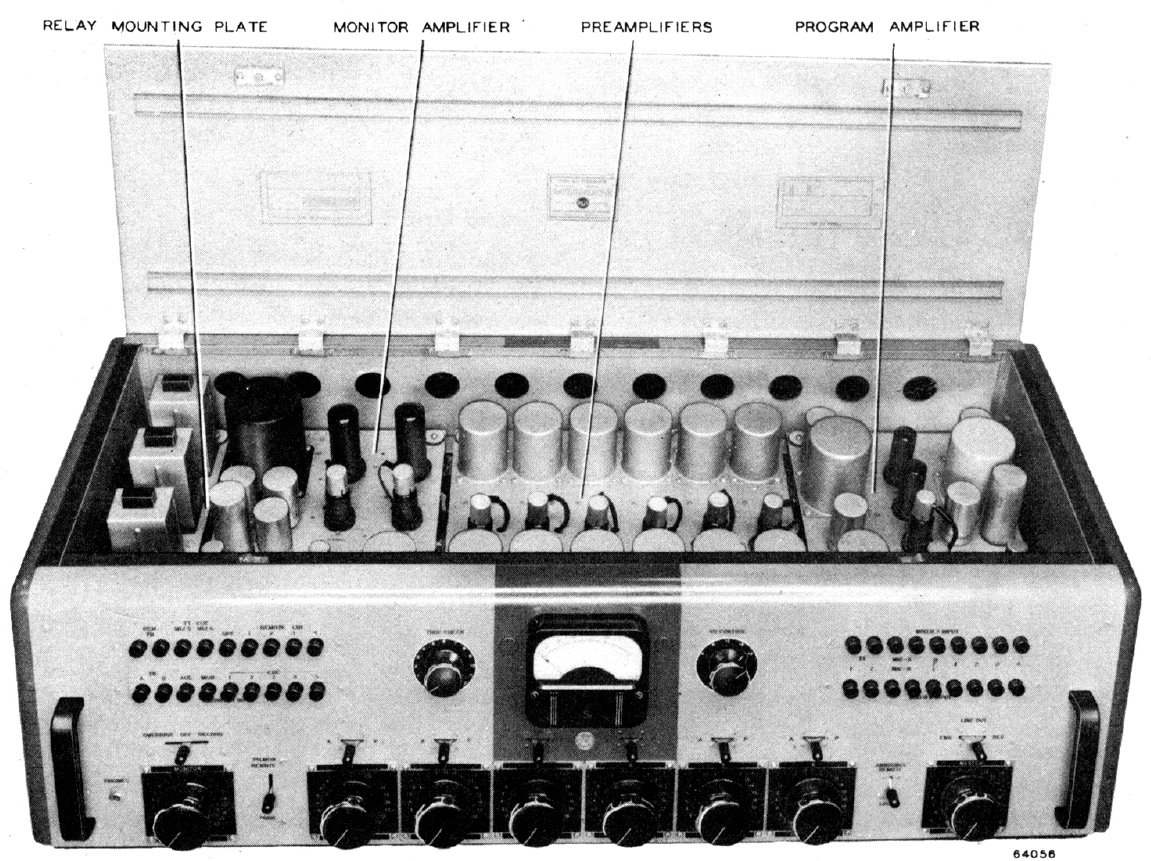
RCA 76-C Studio Consolette
On an interesting side note, one would think that that the different series of boards (i.e., 76-B, -C, -D) were produced sequentially but this was not the case. As far as I've been able to determine, the various series were being built simultaneously in 1950 for different market segments.
The 76-D was made starting around 1950 and was marketed to FM and television stations, as well as AM. About the only difference from the 76-C is the second meter, although I have seen a couple of forum posts by people who have 76-Ds with single meters. The writers of these posts said the second meter was available as an option. But the RCA literature (most notably, the 1950 RCA Broadcast Equipment Catalog), shows the second meter to be the defining feature of the 76-D. In fact, after touting the two-meter setup, the catalog makes the point that "The 76-D is attractively finished and in all respects similar to the 76-C series consolettes." The only explanation I can think of is that RCA produced a few single-meter consoles late in the run and stuck 76-D labels on them.
Regarding that second meter, I have seen and heard a lot of speculation that the 76-D was wired for stereo operation. This is not the case. Again referring to the catalog: "The new 76-D Consolette incorporates two VU meters to permit additional flexibility in auditioning and presetting program signal levels in advance, without any interruption of the program 'on the air.'" I think much of the confusion stems from this board's association with Sun Studios. Sam Phillips used used a 76-D to record all the early Elvis (and Carl Perkins, Jerry Lee Lewis, Johnny Cash, etc.) records. I have heard speculation that Sam Phillips re-wired his 76-D to operate as a stereo unit, but this just doesn't seem likely. In fact, Scotty Moore describes the Sun Studios 76-D as a single-channel mixing console that is basically the same as a 76-C with two meters.
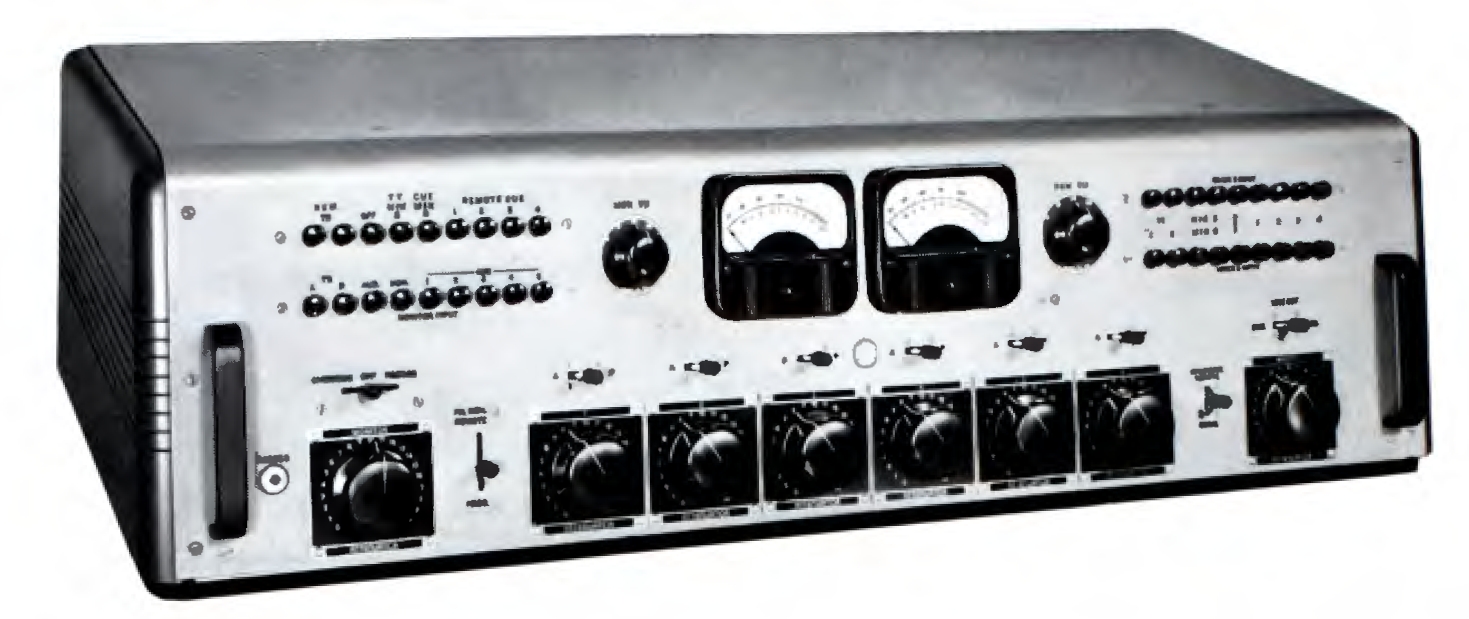
RCA 76-D Studio Consolette
My RCA 76-C
The 76-C I have is in unusually good original condition. One reason is because it apparently spent much of its working life in a backup studio at KTTV TV Channel 11 in Los Angeles. Most of the old mixers I've seen have been pretty well abused and are buried under layers of nicotine and dirt. This one apparently didn't see much action, so it escaped much of the usual wear and tear. It came complete with the original power supply (which doubles rather effectively as a space heater). When I found it, it was in Virginia and I have no idea how it got there. It has no extra holes drilled in it. The only real problem is flaking paint on the wooden trim panel on the right end, an easy fix. It does have a couple of add-ons but they were put in without any damage to the original components or cabinet. I have spoken at length with Mike Dorrough, who worked on this specific unit back when he was a working broadcast engineer. He wired in a rack-mount patch bay and a small pre-amp back in the early 60s. He also added a small box on the back with xlr jacks for all the microphone inputs. Here's a photo of my console with the power supply sitting on top of it.
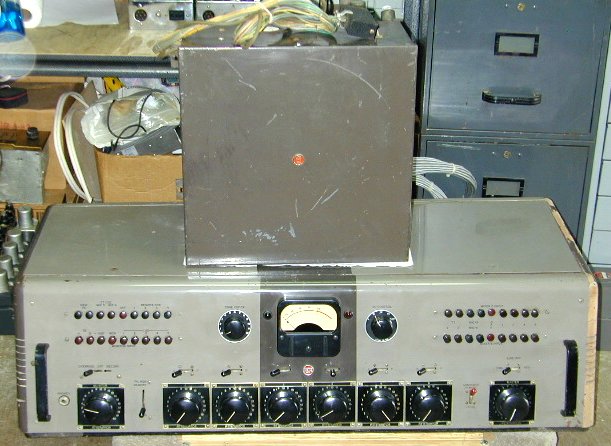
RCA 76-C Consolette with Power Supply
If you've never seen one of these boards in real life, it can be hard to appreciate how massive they are. It doesn't really look like it in the photos but it's about four feet long and weighs about 180 pounds. The power supply adds another 85 pounds or so. You can see the paint flaking off the right trim panel. There is one thing I need to deal with. Channel 4 is wired by default to accomodate a talk-back microphone. This wiring was changed at some point but I've traced the changes and it won't be difficult to put right. I just haven't gotten around to it yet. I did re-wire the headphone jack, which had been disconnected for some reason. It works fine now.
Here's another shot of a 76-series console at work.
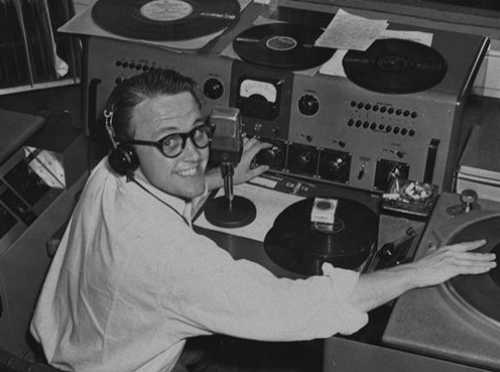
Wally Norman, CKTS, Sherbrooke, Quebec
The tube console or board seems to be the hardest piece of equipment to get. They come on the market from time to time but the price is almost always out of my range. I got lucky with mine. A friend who knew I was looking for one heard about it being on the market and gave me a heads-up. I got a really good deal on it.
Sadly, many of these are no longer around. A lot of this old equipment was stored after it was taken out of service. Unfortunately, in many cases when the mega-networks (e.g. Clear Channel) took over, they simply sent it to the dump. My turntables were saved from just such a fate by someone who knew better. He saved it from the dump when a station in California was bought and automated.
Of the consoles that survived corporatization, many were snapped up my recording studios. In a lot of cases, they pulled out the preamps (which are renowned for their warm sound) and junked the carcass. Sacrilege! A lot of those that were left were exported to collectors in the Far East.
Of course RCA wasn't the only company to make these, although they probably made more than anyone else. Collins, Gates, General Electric, Raytheon, Westerm Electric (Altec after 1947), and a few others made some very nice boards.

RCA BN-2A
RCA BN-2A Portable Broadcast Console
These were originally used to do remote broadcasts or—occasionally—as a backup in the studio or even as the main board in a small, secondary studio. I picked mine up about fifteen years ago. It originally came from an NBC affiliate radio station in Silver Spring, Maryland. It seems to be pretty complete (including a full complement of tubes) but someone modified it pretty extensively in the past. I have done some basic testing and it works. It's a nice little unit but I will probably end up selling it. I want to get either an earlier RCA portable unit or a Western Electric 22-series mixer. In any event, it needs some cosmetic work so I am taking it on as a restoration project, since it's relatively small and most of the work is cosmetic.
© 2009–2015 KWD Radio








